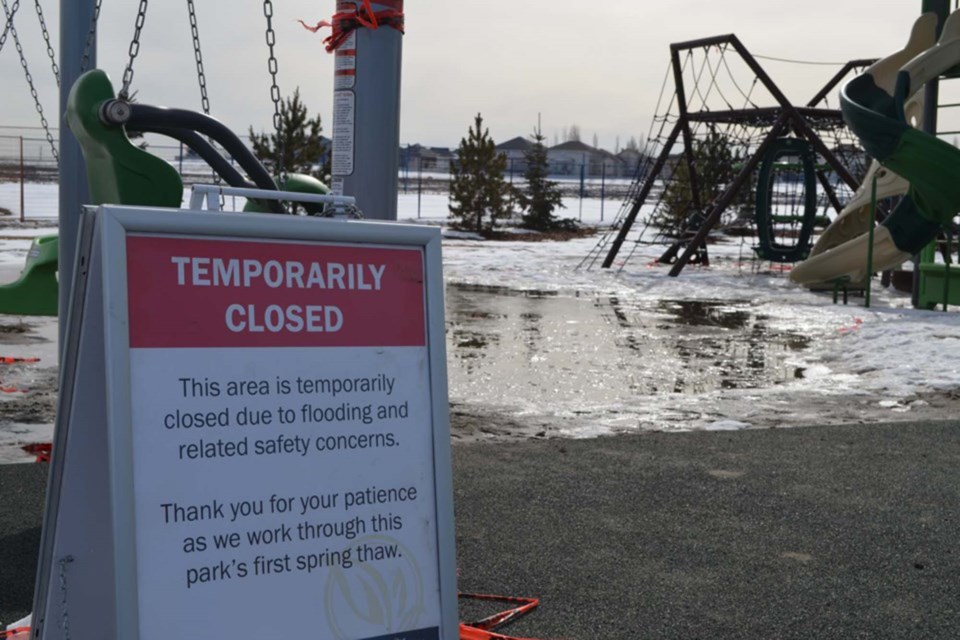Floods and droughts will cost Canada $139 billion in the next 30 years, according to a new report.
In August a report called Aquanomics was released by global engineering and architectural service firm GHD, which highlights the way the Canadian economy will be impacted by climate-related water challenges in the next few decades.
Zuliana Mawani, water and wastewater operations lead for GHD Canada, said the country is already seeing water-related climate-change issues.
“We see the displaced people and direct damage to infrastructure,” Mawani said.
As a result of the changing climate, the group estimates losses of $139 billion between 2022 and 2050. Flooding alone is expected to cost the Canadian economy more than $30 billion in the years leading up to 2050.
“That's just based on droughts, floods, and storms to five major sectors of the economy,” Mawani said.
Manufacturing and distribution will be hit the hardest, the report said, with a loss of $50 billion expected, while fast-moving consumer goods and retail is expected to lose $20 billion. The banking and insurance industry will lose $16 billion while energy and utilities will lose $11 billion. Agriculture will take a hit of $3 billion, according to the report.
“If you think about the distribution of goods, drought interrupts waterborne transportation,” Mawani said.
Flooding can also result in shutdowns, the expert said, adding the flooding in British Columbia last year resulted in major shutdowns of transportation corridors.
Canada has taken a proactive approach to climate change, Mawani said, adding this is something that should have started many years ago, as so far every level of government has declared a climate emergency.
Academic institutions and private industries have also recognized the country is in a climate emergency, which helps to focus the efforts and funding in the right areas, Mawani said.
The country needs to adapt to climate change, the expert said, by looking at infrastructure plans and building in accordance with the changes that are coming. Infrastructure that already exists must be optimized to withstand climate change and projects that can have the most impact must be prioritized, Mawani said.
Across Canada, different regions will experience climate challenges differently. The Prairie provinces where agriculture is an important part of the economy, might be more heavily impacted by droughts and flooding, said Mawani.
“When we look at agriculture as an industry, it requires more water than any other industry, so droughts can be very, very impactful,” Mawani said.
“If a farmer loses productivity from his land for one year, their access to food supply chains [is] huge. But then the next year after that, the lands may still not be viable to then produce and so we see those cascading compounding impacts.”
The report also looked at the economic challenges from water-related disasters in seven other countries, all of which are vulnerable to the impacts of climate change.
“It's interesting in that, [of] all the kinds of countries that we looked at, Canada's large land mass combined with its low population density actually contributes to water risk having a lesser impact than other countries in the study. But saying that, the numbers are [still] staggering,” Mawani said.
The country is already experiencing the impacts of a changing climate, so the report suggests prioritizing smaller projects over big projects, as time is of the essence. Infrastructure projects which use nature are the best choice, the report read.
Previous studies done on flooding in Alberta show the province doesn’t have cohesive flood planning and mapping to handle big weather events, according to the Canadian Climate Institute.
Flood maps in the country only cover half of the properties and assets, and those maps are on average more than 20 years old.
Alberta has faced multiple big weather events which have caused substantial damage in the past several years, with five out of the 10 most expensive disasters occurring in Alberta, including the southern Alberta floods in 2013 and the Fort McMurray floods in 2020.
According to the Canadian Climate Institute report Under Water, released last year, Alberta, Quebec, and Ontario will bear the largest overall costs from climate-change damage to their roadways, as they are the regions with the most extensive road networks. As early as mid-century, damage induced by climate change will cost those provinces hundreds of millions more to maintain their road networks, under the lower-emissions scenario, the report said.
Rail lines will also be impacted by climate change, with damage estimated to cost $1 million to $180 million per year depending on the time frame and emissions scenario, according to the report.
Electrical transmission lines could see damage worth $2.4 billion annually by mid-century from climate change and about $3.6 billion annually by the end of the century under a high-emissions scenario, while in a low-emissions scenario the damage would average $1.8 billion annually
To bring infrastructure across the country up to a standard to be more resilient to climate disaster, such as flooding, estimates in the report say it could cost the country $250 billion.




